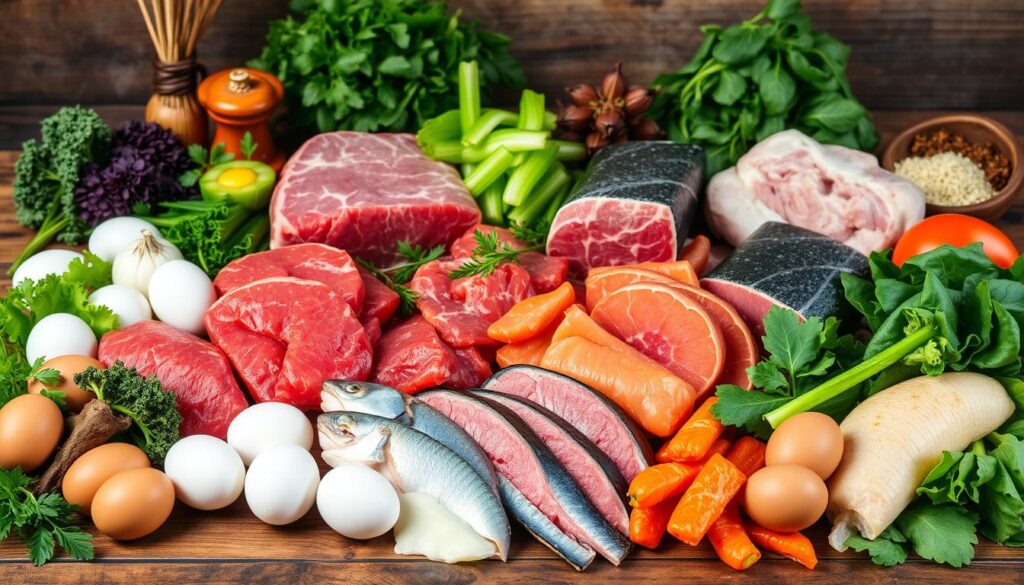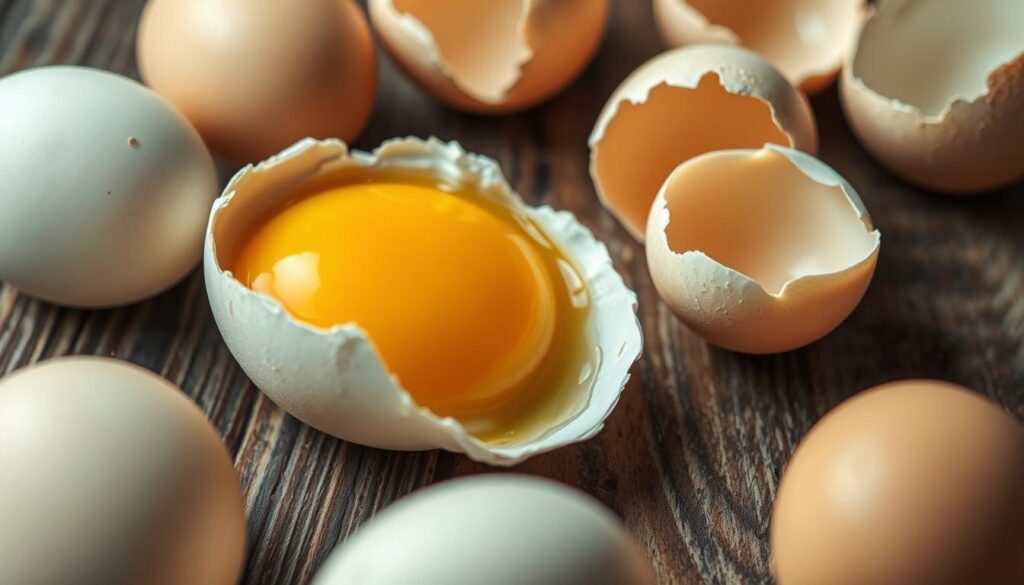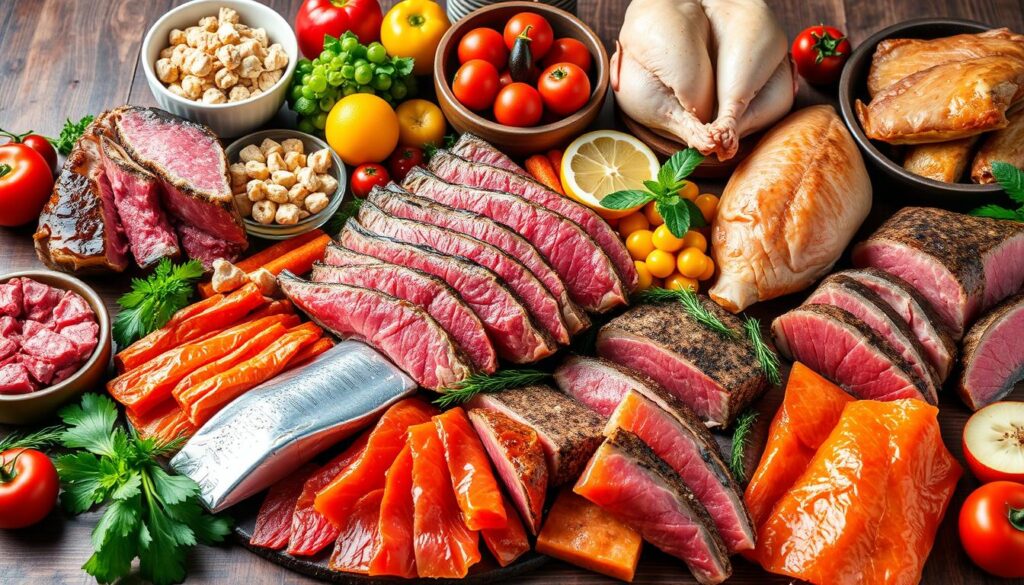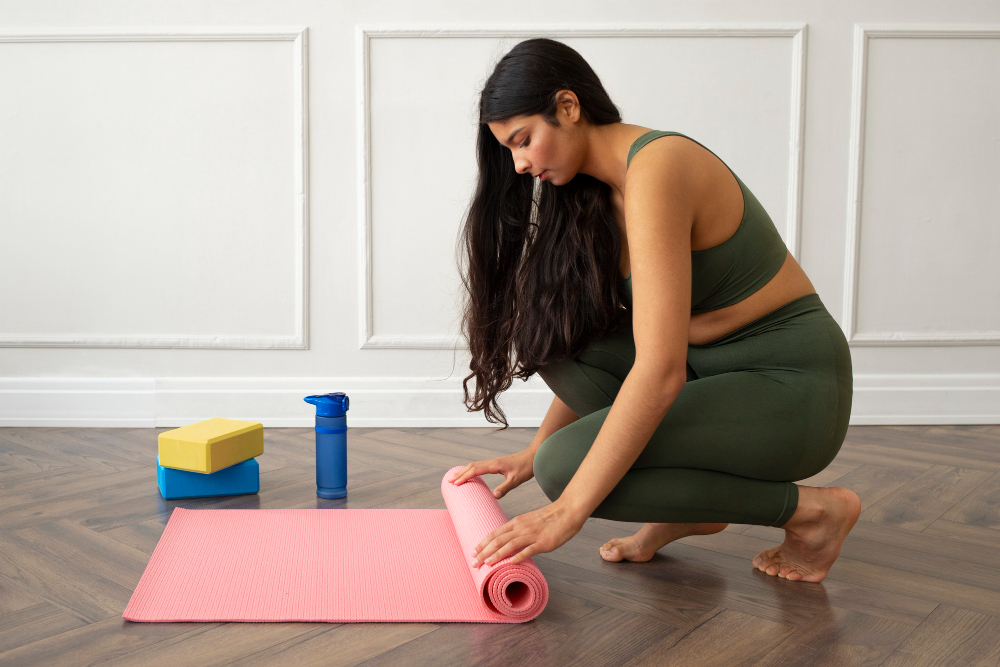Did you know that creatine makes up only 1 percent of human blood1? But it’s very important for quick energy.
Foods with lots of creatine are often from animals like meat, fish, and dairy. Vegans and vegetarians can find plant-based foods that help make creatine too.
This article will tell you about what foods have creatine in sufficient amount or simply foods high in creatine. We’ll also talk about its benefits and how much you should eat every day.
Key Takeaways
- Creatine is an amino acid that plays a crucial role in energy production for short bursts of intense activity.
- Foods rich in creatine are often high in protein and other essential nutrients, typically from animal sources like red meat, seafood, and dairy.
- Vegetarians and vegans can obtain creatine precursors from plant-based sources such as seeds, beans, and certain greens.
- Creatine supplements can be a significant source of creatine for those following a plant-based diet.
- The recommended daily intake of creatine varies, with athletes and individuals unable to synthesize it needing higher amounts.
What is creatine?
Creatine is a natural compound in our bodies, mainly in muscles2. It’s made from amino acids like arginine, glycine, and methionine. It helps give energy for muscle movements. Creatine is stored as phosphocreatine in muscles, ready for quick energy during hard activities3.
Natural sources of creatine
Animal-based foods are where we find most creatine2. Beef is a big source, with about 500 mg per 4-ounce serving2. Chicken and fish like herring, salmon, and tuna are also good, with herring having up to 950 mg per 4-ounce serving2. Pork, like pork tenderloin, also has a lot of creatine, about 550 mg per 4-ounce serving2.
Creatine supplements
For those who can’t get enough creatine from food, supplements are an easy choice2. Creatine monohydrate is the best type, safe and effective for strength and muscle3. You should take about 5 grams a day, but sometimes more to fill up muscle stores quickly3.
In short, creatine is key for muscle energy. You can get it from meat, poultry, and fish, or from supplements. Supplements are great for those who don’t eat meat234.
Related Article: Can I mix Creatine and Pre Workout? All you need to know
Benefits of creatine
Creatine is a great supplement for many reasons. It helps increase strength and muscle growth5. Many athletes take it to get better and recover faster5.
May boost strength gains
It’s good for people who lift weights and exercise a lot5. Creatine monohydrate is the most common type. It makes muscles work better during short, hard exercises5.
May increase muscle growth
Creatine can make muscles bigger by pulling water into them and helping proteins grow5. It also helps muscles recover faster and can prevent injuries5.
It might also help with brain health and glucose use6. Creatine can make high-intensity workouts better by up to 15%6. It can also help with Parkinson’s disease in mice6.
Older people might see better memory with creatine for 2 weeks6. It can also help with Huntington’s disease in mice6.
Creatine is good for a healthy lifestyle. It helps with strength, muscle, and overall health576.
| Food | Creatine Content (per 100g) | Creatine Content (per 4oz serving) |
|---|---|---|
| Herring | 1.1 grams | 950 mg |
| Beef | 0.9 grams | 500 mg |
| Pork Tenderloin | 0.7 grams | 550 mg |
| Chicken Breast | 0.4 grams | 450 mg |
| Tuna | 0.4 grams | N/A |
“Creatine has been observed to restore brain phosphocreatine levels to 72% of pre-disease levels in mice with Huntington’s disease.”
Foods high in creatine :
Creatine is found in many foods, especially in high-protein ones like red meat, poultry, seafood, and dairy8. Knowing which foods have more creatine helps you eat right. Here are some top foods to add to your diet.
Meat and poultry
Red meats like steak and ground beef are great for creatine9. Steak has five grams of creatine per kilogram, and ground beef has 2.5 grams9. Chicken breast also has 0.4 grams of creatine per 100 grams8.
Seafood
Fatty fish like herring, salmon, and tuna are full of creatine. Herring has 6.5 to 10 grams of creatine per kilogram9. Tuna and cod have four grams of creatine per kilogram9.
Dairy and plant-based sources
Creatine is also in some dairy and plant-based foods. Parmesan cheese has 2.9 grams of creatine per 100 grams9. Foods like pumpkin seeds, white beans, walnuts, and almonds have some creatine too9.
The amount of creatine in foods can change with how they’re prepared and cooked. Creatine supplements are good for athletes and bodybuilders who need more8.

Eating a variety of creatine-rich foods is good for your health. A balanced diet is important for feeling your best.
How much creatine in eggs?
Eggs don’t have much creatine10. They are great for protein but not for creatine. Chicken and other poultry have a lot more, about 443 mg per 4 oz10.
Research shows eggs have only about 10 mg of creatine per 2 eggs10. This is very little compared to the 5 grams (5,000 mg) needed daily10. For more info, visit here.
To get more creatine, eat more red meat, seafood, and poultry10. These foods are much better than eggs for getting creatine10.

| Food | Creatine Content per Serving |
|---|---|
| Herring | 938 mg per 4 oz |
| Salmon | 511 mg per 4 oz |
| Tuna | 455 mg per 4 oz |
| Cod | 341 mg per 4 oz |
| Shrimp | 20 mg per 4 oz |
| Pork | 568 mg per 4 oz |
| Beef/Steak | 511 mg per 4 oz |
| Venison | 505 mg per 4 oz |
| Bison | 456 mg per 4 oz |
| Chicken | 443 mg per 4 oz |
| Eggs | 10 mg per 2 eggs |
Eggs don’t have much creatine, only 10 mg per 2 eggs10. But foods like red meat, seafood, and poultry have a lot more10.
Eat more of these high-creatine foods to get enough10. This helps meet your health and fitness goals1011.
Related Article: Does Pre Workout have Creatine? All you need to know
Creatine for Vegans
As a vegan, getting enough creatine can be hard. Creatine helps muscles work better and improves exercise results. It’s mostly found in animal foods like meat, fish, and dairy12. But, vegans can still get enough creatine and enjoy its benefits.
Vegan sources of creatine

Vegans can’t find creatine in plants directly. But, eating foods rich in certain amino acids helps. These amino acids are arginine, glycine, and methionine1213.
Great vegan foods for these amino acids are:
- Pumpkin seeds
- Sesame seeds
- Walnuts
- Almonds
- Watercress
- Spinach
- Asparagus
- Spirulina
- Chickpeas and other legumes
These foods help make more creatine in the body1213. But, vegan athletes might still need creatine supplements. This ensures they have enough for their workouts and performance.
Creatine supplements are vegan-friendly. They’re made synthetically and don’t have animal products1213. Always check the label to make sure it’s vegan.
“Consistent creatine supplementation can be a game-changer for vegan athletes, helping to boost muscle performance and recovery.” – Expert Nutritionist
Vegans can get enough creatine by eating foods rich in amino acids. They might also need to take creatine supplements. This helps them meet their fitness goals and stay active1213.
| Vegan Creatine Sources | Creatine Benefits for Vegans |
|---|---|
| Pumpkin seeds, sesame seeds, walnuts, almonds, watercress, spinach, asparagus, spirulina, chickpeas, and other legumes | Improved exercise performance, increased muscle growth, enhanced cognitive abilities, and better vascular reactivity |
How much creatine do you need?
The daily creatine intake should be 3 to 5 grams14. Your body makes 1 to 2 grams of creatine each day. You also get 1 gram from your food14. Athletes might need up to 10 grams a day for better performance15.
People with certain health issues might need 10 to 30 grams of creatine daily15. Always talk to a doctor before starting creatine daily intake supplements.
A 1996 study found that 3 grams of creatine daily for 28 days can fill up your body’s stores15. Taking 20 to 25 grams daily for 5 to 7 days can increase muscle creatine by 20% to 40%15. Finding the right how much creatine do you need is key for your fitness goals.
The ideal creatine daily intake varies by age, activity level, and health. The best way to figure out how much creatine do you need is to talk to a healthcare professional.













